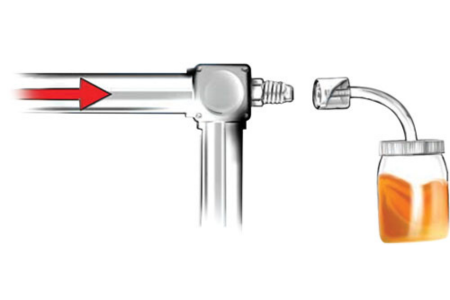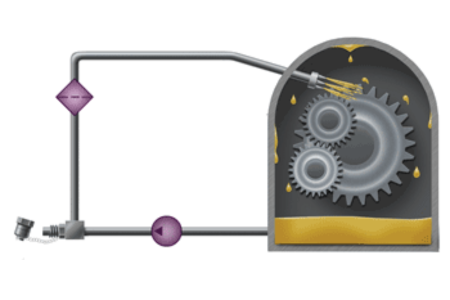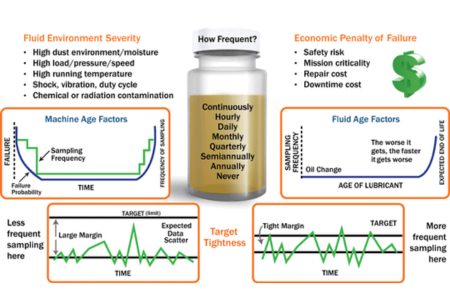The significance of proper lubrication must be balanced in machinery maintenance and reliability. Well-lubricated machinery ensures optimal performance, minimizes wear and tear, and prolongs the lifespan of critical components.
As maintenance professionals and engineers strive to strike a balance between equipment uptime and operational costs, the practice of oil sampling emerges as a crucial tool. In this article, we delve into the art and science of determining the ideal oil sampling frequency, catering to a diverse audience ranging from maintenance managers to mechanical engineers.
Selecting Sampling Points
Practical oil analysis begins with selecting appropriate sampling points. These points serve as windows into the internal health of the machinery. Key components and zones include gearbox chambers, bearing housings, and hydraulic systems. Each sampling point provides unique insights, aiding in the early detection of potential problems.
5 Key Variables Shaping Sampling Frequency Calculation
- Cost of Failure: Assessing the economic impact of a potential machinery breakdown is crucial. The more catastrophic the outcome, the higher the need for frequent oil sampling.
- Fluid Environmental Severity: Machines operating in harsh environments, exposed to contaminants and extreme temperatures, need more frequent oil sampling.
- Machine Age: The machinery age influences the wear and tear rate. Older equipment might need more frequent monitoring to ensure proper lubrication.
- Oil Age: As oil ages, it degrades and loses its effectiveness. Regular sampling helps determine when to replace or rejuvenate the lubricant.
- Target Tightness: The precision required for a machine's functioning dictates the necessary level of lubrication. Tighter tolerances call for more vigilant sampling.
Sampling Strategies for Different Systems

Circulating System Sampling
Regular sampling is vital in systems where oil circulates, such as hydraulic systems. This helps identify contaminants and track fluid health, ensuring optimal performance and preventing premature component wear.

Circulating Wet Sump Sampling
Like internal combustion engines, machines equipped with wet sumps enjoy frequent oil sampling. Continuous analysis allows for detecting metal particles, coolant contamination, and fuel dilution.
Non-Circulating System
Equipment with non-circulating lubrication, like enclosed gearboxes, requires periodic oil sampling. This practice helps assess the lubricant's condition and identify potential problems.
Sampling Frequency

Determining the optimal oil sampling frequency hinges on striking a delicate equilibrium between economic considerations and equipment reliability. Drawing insights from the five critical variables discussed earlier; industry professionals can leverage established algorithms and industry guidelines to calculate a sampling frequency that ensures efficiency and precision. This balancing act facilitates cost-effective maintenance routines while safeguarding machinery performance.
The significance of regular oil sampling becomes evident as it offers a timely window into machinery health, enabling maintenance experts to identify deviations and emerging patterns. Engineers can make well-informed choices on lubricant replenishment, potential equipment overhauls, and predictive maintenance timelines by tracking factors like oil quality and wear debris accumulation. While the concept of oil sampling frequency appears straightforward, the challenges in implementation are notable. Addressing the need for representative samples, sidestepping cross-contamination risks, and interpreting analysis reports need meticulous attention to detail and thorough training.
As the field of machinery maintenance evolves, technological strides in sensor technology, data analytics, and artificial intelligence are reshaping conventional practices. The gradual integration of real-time monitoring and predictive algorithms is redefining the significance of traditional oil sampling frequency calculations. In this dynamic landscape, maintenance strategies are shifting towards proactivity and efficacy, with these advancements fostering a transition to more streamlined and efficient operations.
Conclusion
Regular oil sampling is invaluable, providing a timely window into machinery health and enabling quick identification of deviations and trends. Informed decisions about lubrication, maintenance schedules, and predictive strategies are empowered through vigilant oil quality and wear debris monitoring. Amidst the implementation challenges, mastering the nuances of oil sampling is a crucial skill for effective machinery management.
As technology continues to reshape maintenance practices, integrating real-time monitoring, predictive algorithms, and sensor advancements is revolutionizing traditional approaches to oil sampling frequency calculations. This shift toward proactive and efficient maintenance strategies promises improved operational efficiency and reduced downtime. For those seeking to optimize machinery reliability, CRE Philippines’ MachineTM Program offers an opportunity to elevate maintenance practices through cutting-edge insights. Explore more by contacting us today and embark on a journey toward enhanced machinery performance.
Source:
Fitch, B. (2014, June). Anatomy of a Representative Oil Sample: Part 3 - Sampling Frequency and Location. Machinery Lubrication. https://www.machinerylubrication.com/Read/29773/oil-sampling-frequency


